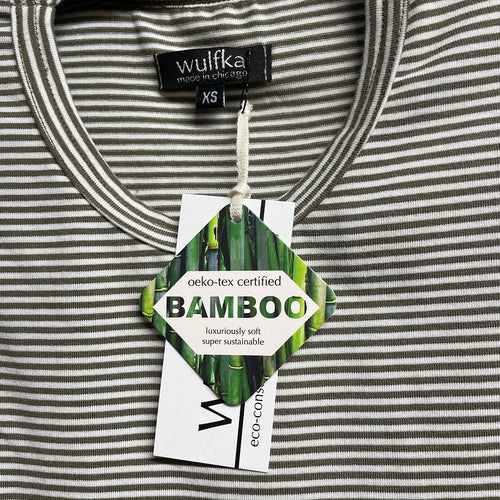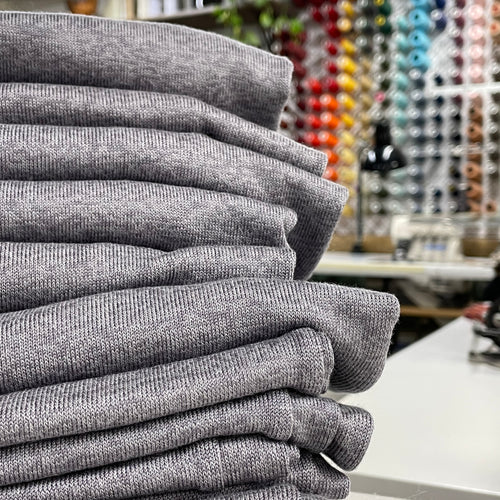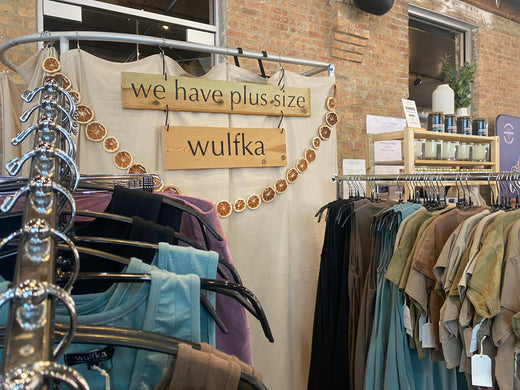Sustainable Fashion: What is Rayon and is it sustainable? A Love Letter to Tencel.

Originally posted April 28, 2021
I have been super stoked about this summer's Tencel fabric and I want to take a deep dive with you about why I consider it so eco-friendly.
Do you remember our fiber chart from Fabric Science Basics? Here it is again in case you don't have it saved to your computer: (kidding! kind of...)

Tencel is a branded version of rayon (kind of like Kleenex is a brand of facial tissue, get it?) Rayon in general falls under "cellulosic" which means it comes from plants. (You remember from 5th grade biology that plant cells are made of cellulose!) It has the chemical properties we love in plant-based fibers, namely that it breathes and will eventually biodegrade, but with the long-as-you-please filament length of polyester, which makes it much more versatile. More on that later.
Rayons are often made from trees like birch and bamboo (yes ALL bamboo fabrics are rayons) but they can be made from just about any plant material. The wood is chipped up and dissolved in a chemical solution resulting in a thick viscous soup. That soup is extruded through teeny teeny tiny holes like a miniscule spaghetti maker. Those spaghettis are our rayon fibers which are spun into yarns and woven into fabric!
Now imagine that you're braiding daisies for a crown. If you had only short, stubby stems you'd need a lot more daisies and there would be many stubby ends sticking out every which way, right? Long stems would definitely be better! It's the same when fibers are being spun into yarns. Take cotton for example. Cotton fibers range from 3/4" to gloriously luxurious 3" long. Fabrics made from those short fibers have thicker yarns and feel more course and cheap. Bed sheets brag about their thread count as a measure of quality, but it's really a measure of how thin their yarns are (= how long the fibers are!) and therefore how many yarns they can shove into a square inch. (Egypt has the ideal cotton-growing climate for those long fibers, which is why Egyptian Cotton is such a big deal!)
Since rayon is extruded like spaghetti or polyester, fibers could be miles long if you wanted! Manufacturers can make beautifully soft, thin fabrics with rayon, or cut the fibers short to mimic other fibers, crimp texture to imitate wool, or spin the yarns with more or less "twists per inch" for more or less structured fabrics. The possibilities are literally endless.
So how eco-friendly is rayon and, specifically, Tencel? Let's re-visit the other graphic from "Fabric Science Basics" that you saved on your computer. These are the three stages at which eco-friendly choices could be made.

Acquisition: Tencel is made from sustainably farmed trees! Other rayons may be made from bamboo which grows quickly and is therefore able to be sustainably harvested. However, some rayon fibers come from old growth forests which is super bad for the earth! Check out this episode of Wardrobe Crisis Podcast to learn more. Secondly, the chemicals that dissolve all that wood are particularly nasty. Much of it is waste after it's used once, which is bad news. However! The company that makes Tencel has pioneered a closed loop production, which means that 99.9% of the chemical solution is re-captured and used again and again.
Processing: My Tencel/Organic Cotton fabric is Oeko-Tex Certified "Standard 100" which means that it has no harmful chemicals. Many dyes and finishes added to fabric are toxic. They wash into our waterways and leech into our skin. It's a big deal that hasn't gotten much attention in the media, but you don't need to worry about that with Oeko-Tex certification!
End of Life: Like all cellulosic fibers, Tencel will eventually decompose and return to the earth. No hanging out in a landfill for 400 years, no microplastics poisoning the oceans. Just organic material doing what organic material does.
See? It ticks all the boxes. This season's Tencel/Organic Cotton fabric is the most sustainable fabric I've ever used!
It Started With A Bang

The first iterations of rayon were--omg get this--explosives! In 1846 chemist Christian Friedrich Schoenbein started experimenting with cotton and nitric acid as a replacement for gunpowder. He called it Guncotton. Please tell me you love that as much as I do.
A practical version of the fiber emerged around 1884 but wallowed in relative obscurity until WWI. A shortage of silk (used in parachutes at the time) caused rayon to be mass produced in 1910 as an alternative to silk for hosiery and undergarments. It wasn't called rayon at the time, it had many names which confused consumers. Most commonly "artificial silk" but my favorite is "wood silk."

In 1924 regulators agreed on the name "rayon" meant to evoke rays of sunshine. Great re-branding, but I'm going to start a petition to change it back to either "guncotton" or the poetic and appropriately descriptive "wood silk." Who's with me?




